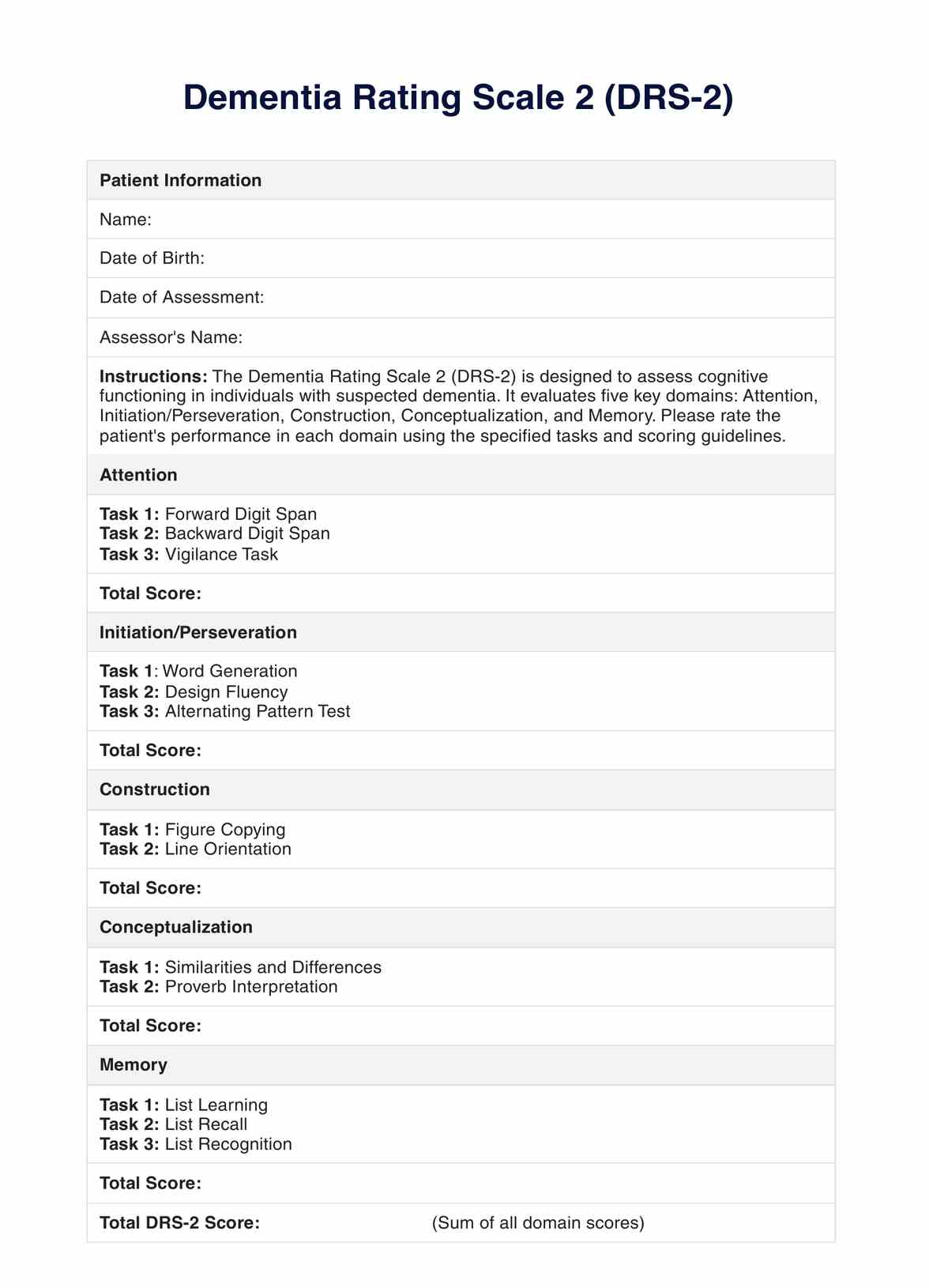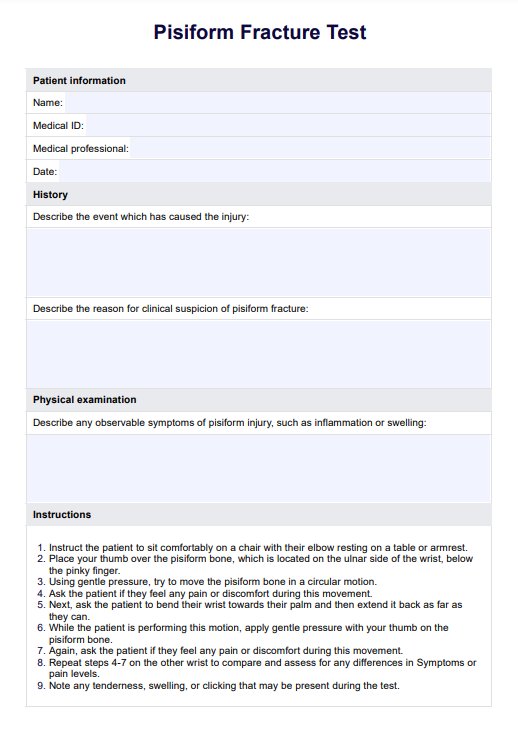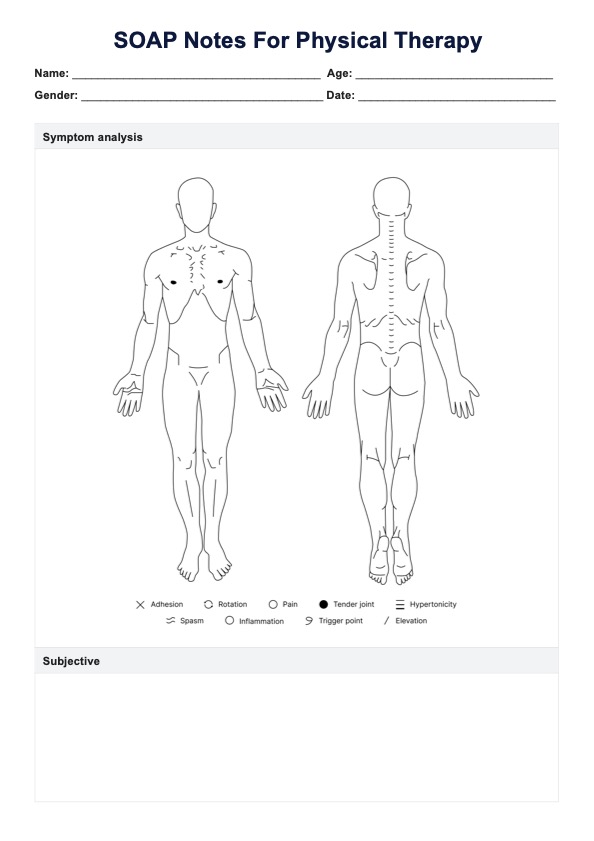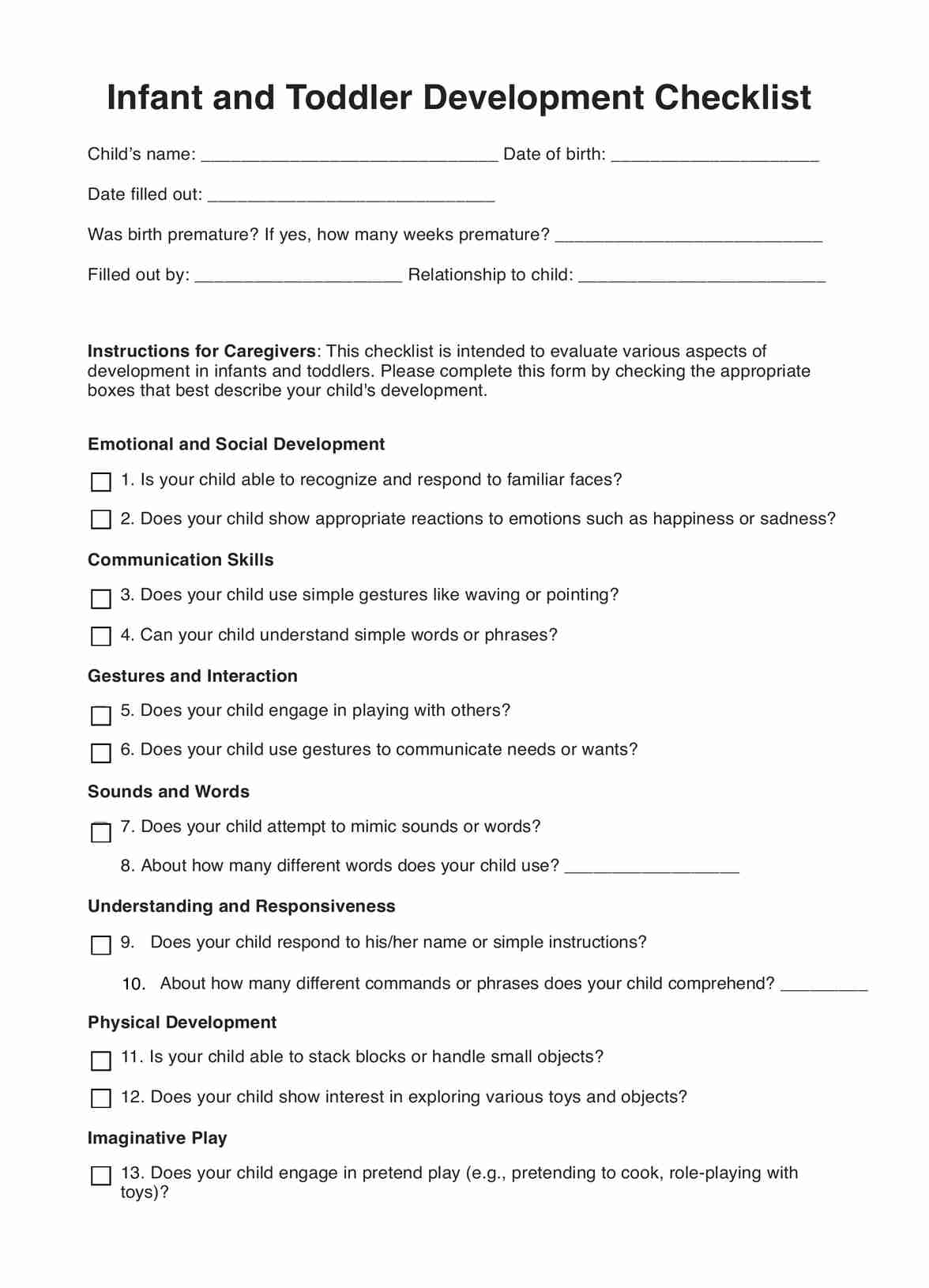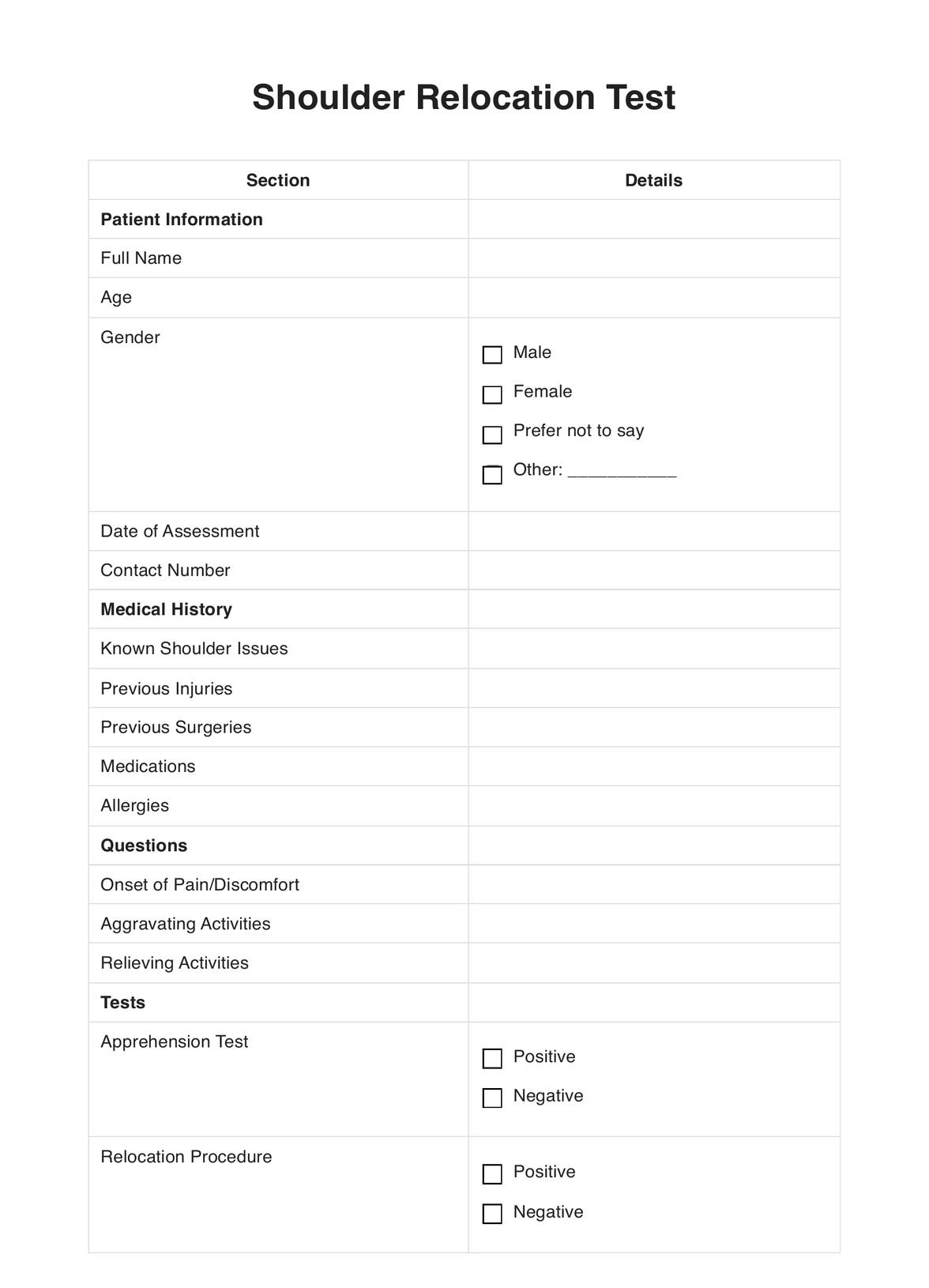Pediatric Evaluation Of Disability Inventory
Download the PEDI assessment notes template to document key findings, strengths, challenges, and clinician impressions for effective pediatric assessment and care.


What is a Pediatric Evaluation of Disability Inventory?
The Pediatric Evaluation of Disability Inventory (PEDI) is a clinical assessment for children ages 6 months to 7.5 years, focusing on functional skills and daily performance. Unlike traditional assessments that primarily measure impairments, the PEDI evaluates what children can do in everyday activities, considering both personal and environmental factors. This paper-based assessment looks into the three functional domains: self-care, mobility, and social function. This approach provides a more comprehensive understanding of a child's functioning in daily life (Haley et al., 2010).
An expanded version, the Pediatric Evaluation of Disability Inventory computer-adaptive tests (PEDI-CAT), assesses four domains: daily activities, mobility, social/cognitive skills, and responsibility in children and youth aged 0 to 21 (Haley et al., 2011). The PEDI is also crucial in inpatient rehabilitation for measuring changes in a child's functional abilities. A study by Iyer et al. (2003) identified minimal clinically important difference (MCID) in PEDI scores, highlighting its value in assessing functional progress during rehabilitation.
Important considerations for the disability inventory pediatric evaluation include not using it as the sole basis for diagnosis or treatment decisions; it is one of several tools practitioners can use to assess the functional needs of children with disabilities. By using the Pediatric Evaluation of Disability Inventory alongside additional tools, practitioners can create individualized care plans for children with disabilities, supporting their optimal functional performance and well-being.
Pediatric Evaluation Of Disability Inventory Template
Pediatric Evaluation Of Disability Inventory Example
How does this PEDI assessment notes template work?
The PEDI test report forms, along with its supporting materials, can be obtained by purchasing it directly from Pearson. If you, as a clinician, wish to access these resources, please check their website. Meanwhile, as an additional tool to assist you in your practice, the PEDI assessment notes can be used to document key observations after the PEDI assessment. Please note that this template is not official material from the manual and is intended solely for recording assessment notes.
Step 1: Download the template
Download the PEDI assessment notes template to your device. Ensure that you have a digital or printed copy to work from during the assessment. To customize it based on your clinical needs, click the 'Use template' to access it through our Carepatron platform.
Step 2: Complete the client information
After the PEDI assessment, begin by filling out the client information section. This includes basic details such as the patient's name, date of birth, gender, diagnosis, and relevant medical history. This helps contextualize the assessment results within the patient's overall health profile.
Step 3: Document assessment findings
Next, document the key findings, strengths, and areas for improvement from the PEDI assessment. In the Key Findings section, summarize the child's performance, including delays or concerns. Highlight specific strengths and note any challenges (e.g., mobility or social functioning) that require attention.
Step 4: Add behavioral observations and clinician's impression
After documenting the assessment findings, add any behavioral observations that might impact therapy. Consider how the child reacts during the assessment, their level of engagement, or any frustrations observed. Finally, summarize your clinical judgment, including recommendations for further therapy or interventions based on the assessment results.
Who can use our assessment notes template?
The PEDI assessment notes template is a valuable resource for healthcare professionals, educators, and caregivers to effectively document a child's functional abilities. Here's who can typically use it:
Pediatricians
Pediatricians can use the tool to record a child's functional abilities, identifying potential areas of concern that may need further evaluation or specialized intervention.
Physical therapists
In pediatric physical therapy, the notes can document mobility-related findings from the PEDI assessment, helping design targeted therapy plans that improve strength, coordination, and functional mobility.
Occupational therapists
During occupational therapy, the notes can serve as a basis for tracking a child's performance in daily living activities and guiding strategies to enhance independence and quality of life.
Special education teachers, caregivers, and parents
Special education teachers can document classroom-relevant findings, using the notes to identify specific support needs and promote participation in educational activities. Caregivers and parents can use the template to understand their child's abilities, monitor progress, and communicate effectively with professionals about their child's development.
Benefits of using this free template
Here are the benefits of using the PEDI assessment notes template during the pediatric evaluation of disability inventory:
Easy to use
The assessment notes template is straightforward and user-friendly, making it simple for healthcare professionals to document key findings and observations.
Saves time
The template eliminates the need to create notes from scratch by providing a structured format, helping clinicians quickly record and organize assessment results.
Available in digital and printable formats
Whether you prefer to type on a device or work with a printed copy, the template is versatile and accessible in both formats to suit your workflow.
References
Iyer, L. V., Haley, S. M., Watkins, M. P., & Dumas, H. M. (2003). Establishing minimal clinically important differences for scores on the pediatric evaluation of disability inventory for inpatient rehabilitation. Physical Therapy, 83(10), 888–898. https://pubmed.ncbi.nlm.nih.gov/14519060/
Haley, S. M., Coster, W. I., Kao, Y.-C., Dumas, H. M., Fragala-Pinkham, M. A., Kramer, J. M., Ludlow, L. H., & Moed, R. (2010). Lessons from use of the pediatric evaluation of disability inventory: Where do we go from here? Pediatric Physical Therapy, 22(1), 69–75. https://doi.org/10.1097/pep.0b013e3181cbfbf6
Haley, S. M., Coster, W. J., Dumas, H. M., Fragala-Pinkham, M. A., Kramer, J., Ni, P., Tian, F., Kao, Y.-C., Moed, R., & Ludlow, L. H. (2011). Accuracy and precision of the pediatric evaluation of disability inventory computer-adaptive tests (PEDI-CAT). Developmental Medicine & Child Neurology, 53(12), 1100–1106. https://doi.org/10.1111/j.1469-8749.2011.04107.x
Commonly asked questions
The Pediatric Evaluation of Disability Inventory (PEDI) is a tool used to assess children's key functional capabilities and performance.
The PEDI measures daily functional abilities in self-care, mobility, and social function domains. The Gross Motor Function Measure (GMFM) evaluates changes in gross motor skills, primarily for children with cerebral palsy.
The completion time for the PEDI typically ranges from 45 to 60 minutes, though this may vary depending on the child's specific needs.


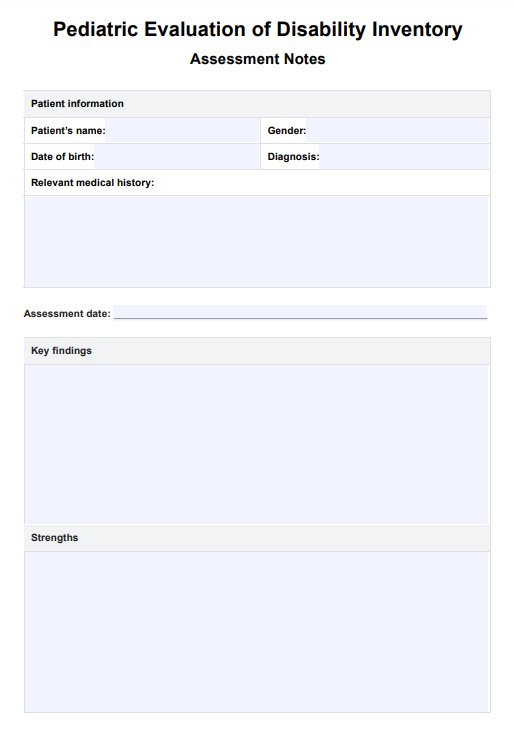
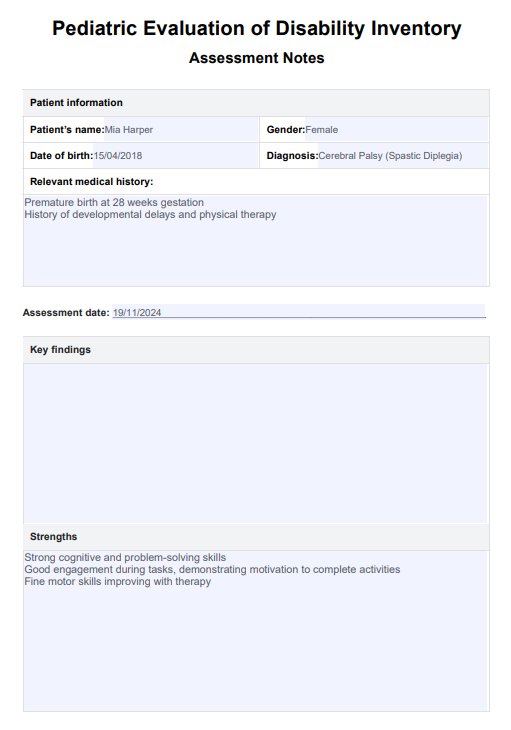

















-template.jpg)


















































































